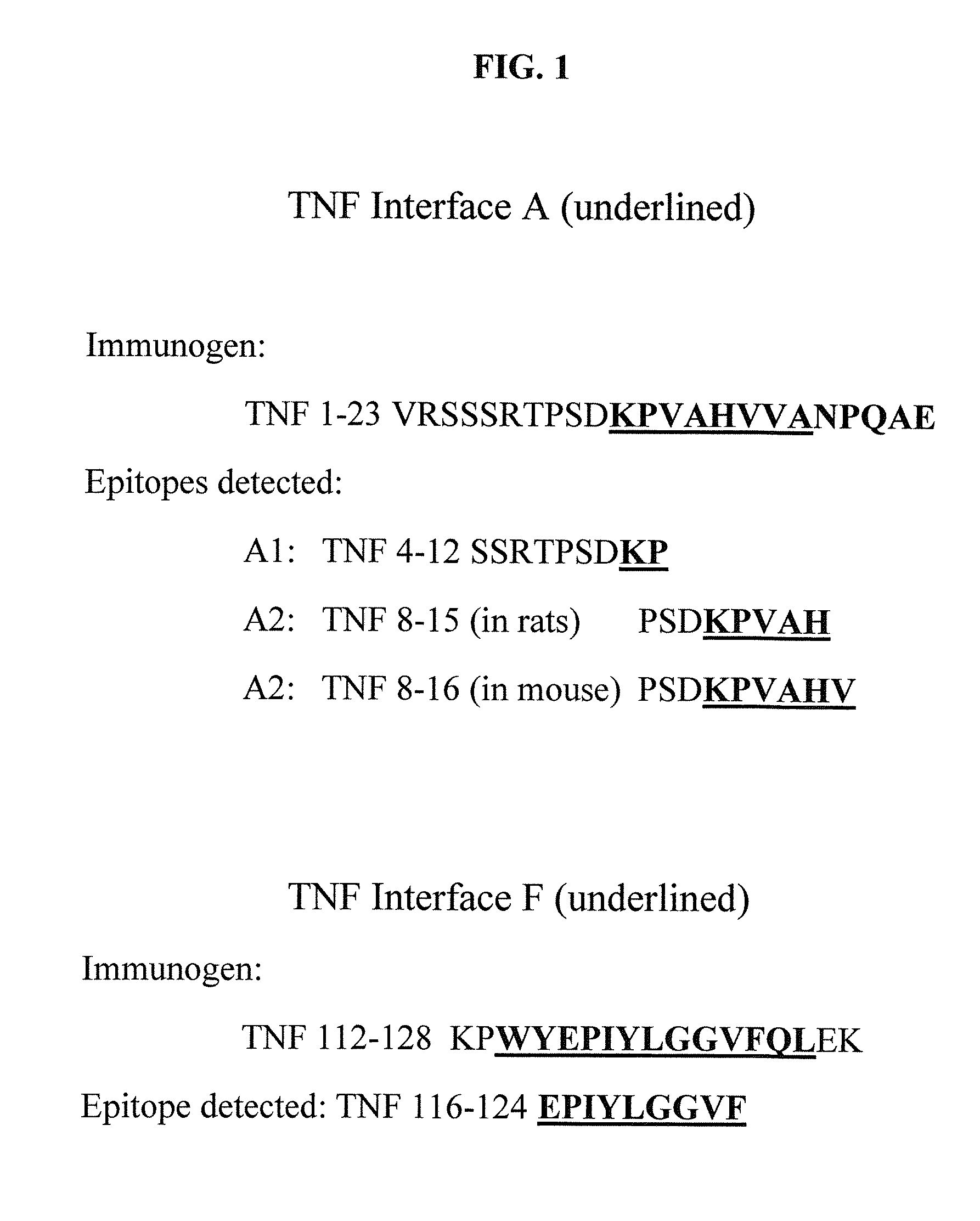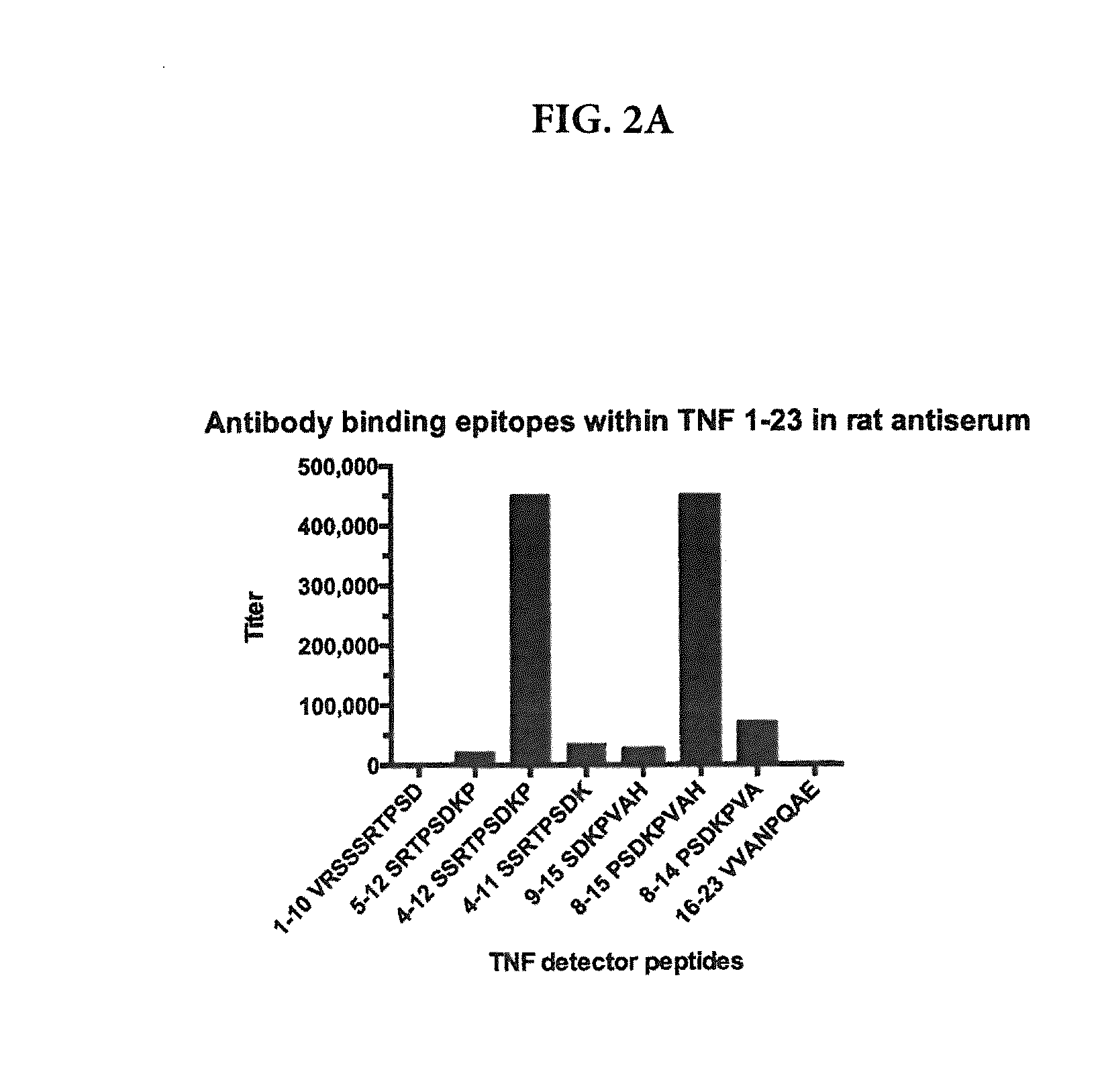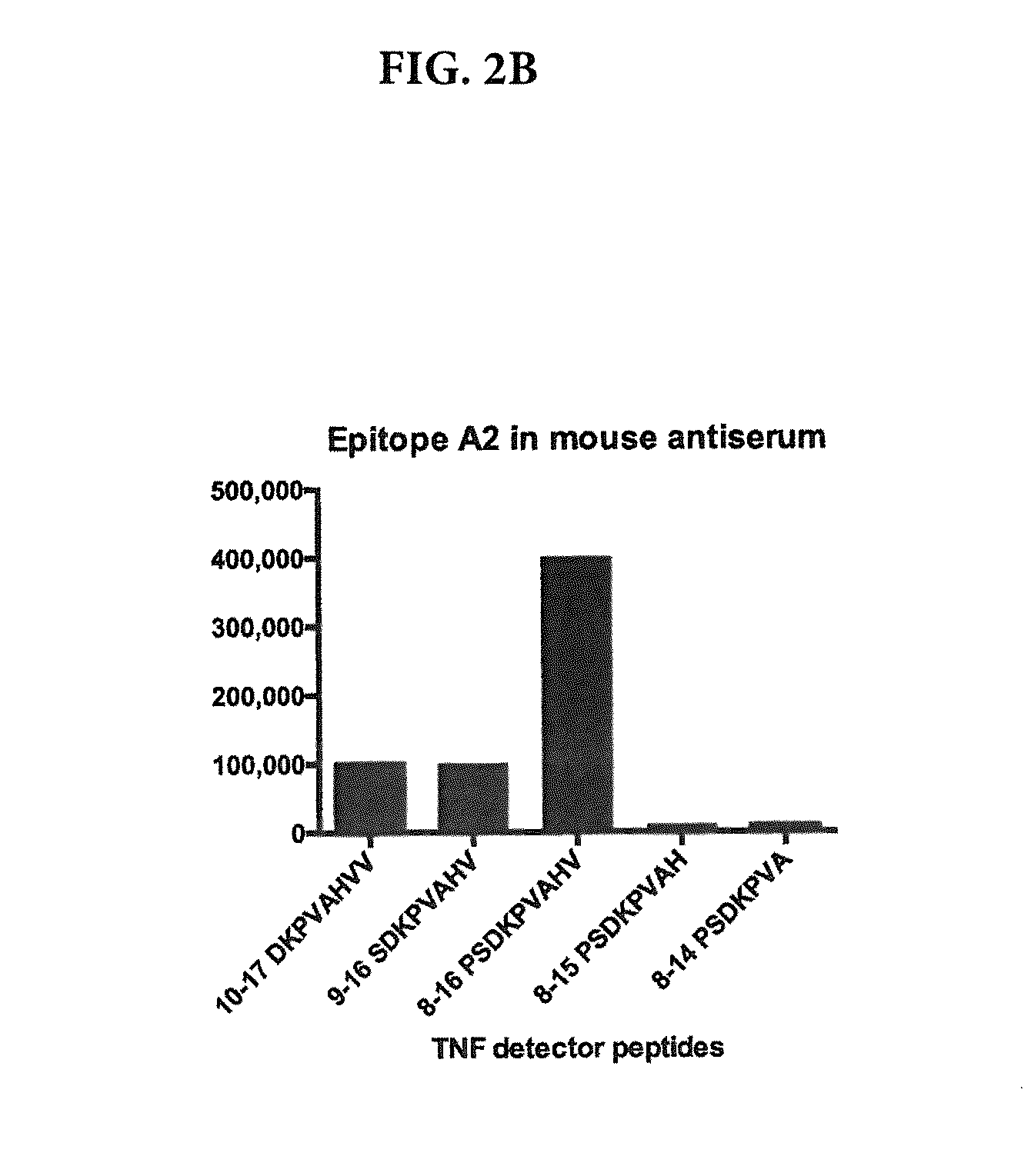Compositions for Selective Reduction of Circulating Bioactive Soluble TNF and Methods for Treating TNF-Mediated Disease
a bioactive soluble and selective reduction technology, applied in the field of compositions for selective reduction of circulating bioactive soluble tnf and methods for treating tnfmediated diseases, can solve the problems of little hope for the development of new monoclonal antibodies selective blocking, poor treatment effect, and inability to selectively block antibodies to short sequences of tnf, so as to improve the susceptibility of the treated subject to infection and not affect the structure or bioactivity of tmtn
- Summary
- Abstract
- Description
- Claims
- Application Information
AI Technical Summary
Benefits of technology
Problems solved by technology
Method used
Image
Examples
example 1
TNF Epitope Mapping
[0064]The 157 amino acid TNF monomers SEQ ID NO: 1 have an elongated, anti-parallel β pleated sheet structure. When three monomers are associated in a non-covalent trimer, bioactive sTNF is formed. Five stretches of amino acid sequences form the interface β sheet contact surfaces:
AKPVAHVVA, aa11-18 of SEQ ID NO: 1;A′ALLAN, aa35-39 of SEQ ID NO: 1;CGLYLIYSQVLFKGQ, aa54-67 of SEQ ID NO: 1;FWYEPIYLGGVFQL, aa114-126 of SEQ ID NO: 1;andHQVYFGIIAL, aa149-157 of SEQ ID NO: 1,
where A, A′, C, F and H refer to a β sheet naming convention11.
[0065]To attain trimer disruption immunologically, the inventor theorized that antibody binding to epitope sequences that are wholly or partially within the contact area between adjacent monomers (the so-called internal or interface regions) would not bind to intact trimers of sTNF or tmTNF but would only bind to free monomers of TNF. In binding only to the free monomers, these antibodies would disrupt or prevent the ability of the monome...
example 2
Selective Binding Activity
[0076]Natural or synthetic sTNF consists of a mixture of inactive TNF monomers, inactive TNF dimers and bioactive TNF trimers. Each antibody used in the assays and commercially available anti-TNF antibodies (e.g., REMICADE) or commercially available TNF receptor chimera (e.g., ENBREL) binds to synthetic TNF coated on a plate, as in the conventional ELISAs performed in Example 1. However, detection of specific binding of an antibody / ligand to the monomeric, dimeric or trimeric form of sTNF requires appropriate selective assays. To demonstrate the selective binding activity of antibodies or ligands that bind only the three epitopes on a monomer as identified in Example 1, the following assays are performed:
[0077]Sandwich Assay
[0078]In one embodiment, a sandwich assay employs a biotinylated anti-TNF antibody which binds the sTNF in a sample, followed by detection with the same antibody, non-biotinylated, coated on a plate25. The unlabeled antibody is plated (e...
PUM
| Property | Measurement | Unit |
|---|---|---|
| affinity | aaaaa | aaaaa |
| concentration | aaaaa | aaaaa |
| size | aaaaa | aaaaa |
Abstract
Description
Claims
Application Information
 Login to View More
Login to View More - R&D
- Intellectual Property
- Life Sciences
- Materials
- Tech Scout
- Unparalleled Data Quality
- Higher Quality Content
- 60% Fewer Hallucinations
Browse by: Latest US Patents, China's latest patents, Technical Efficacy Thesaurus, Application Domain, Technology Topic, Popular Technical Reports.
© 2025 PatSnap. All rights reserved.Legal|Privacy policy|Modern Slavery Act Transparency Statement|Sitemap|About US| Contact US: help@patsnap.com



